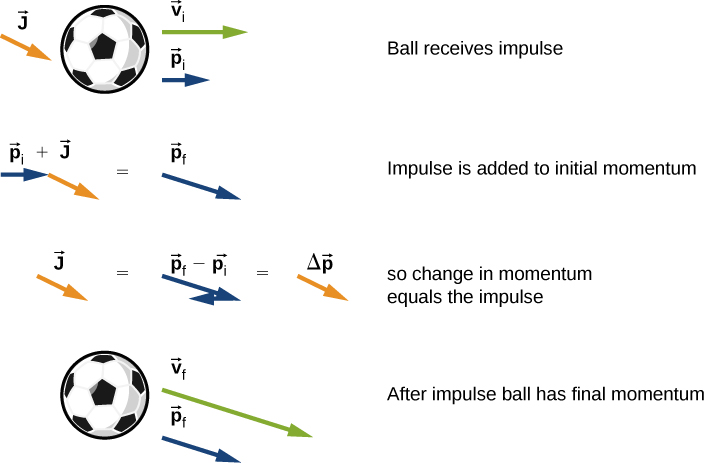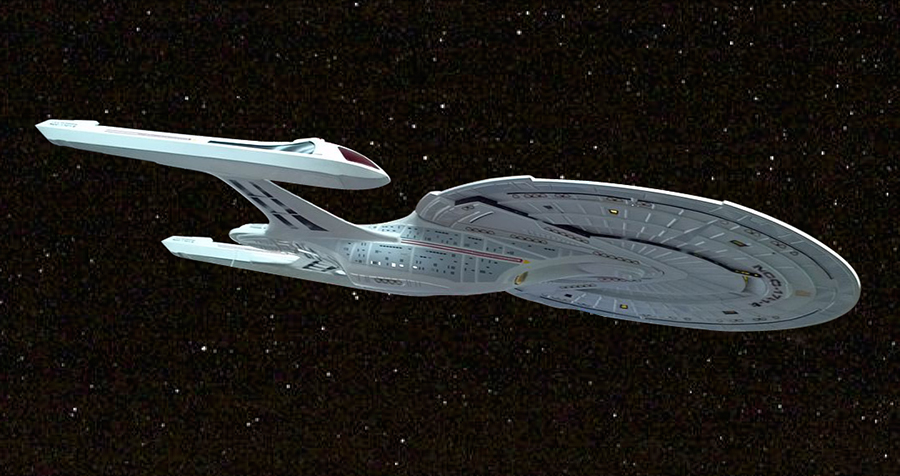| << Chapter < Page | Chapter >> Page > |
Since an impulse is a force acting for some amount of time, it causes an object’s motion to change. Recall [link] :
Because is the momentum of a system, is the change of momentum . This gives us the following relation, called the impulse-momentum theorem (or relation).
An impulse applied to a system changes the system’s momentum, and that change of momentum is exactly equal to the impulse that was applied:
The impulse-momentum theorem is depicted graphically in [link] .

There are two crucial concepts in the impulse-momentum theorem:
The most common questions asked in relation to impulse are to calculate the applied force, or the change of velocity that occurs as a result of applying an impulse. The general approach is the same.

“Mister Sulu, take us out; ahead one-quarter impulse.” With this command, Captain Kirk of the starship Enterprise ( [link] ) has his ship start from rest to a final speed of . Assuming this maneuver is completed in 60 s, what average force did the impulse engines apply to the ship?
with
and
Equating these expressions gives
Solving for the magnitude of the force and inserting the given values leads to

Notification Switch
Would you like to follow the 'University physics volume 1' conversation and receive update notifications?